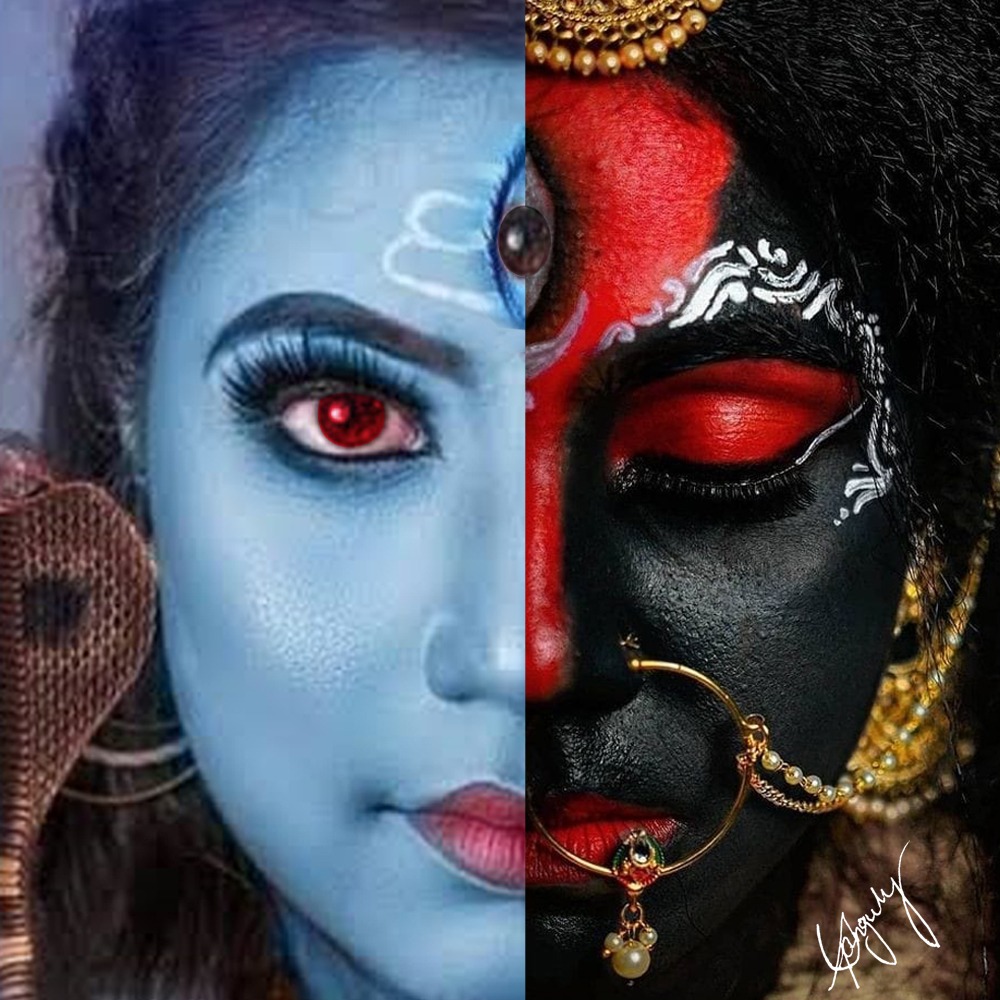Two of the strongest figures from Hindu mythology are Goddess Kali and Lord Shiva. They all represent a different dimension of God, yet their story and symbols intertwine. The bond between Kali and Shiva is unique and perplexing depicting the incessant cycle of birth and death. Vedas and Puranas also have tried to explain the intricate dynamics between Mahakali Rudraani and Mahakal Shiva Rudra. Despite appearing as two distinct entities, they embody a unified essence, a concept both simple and profoundly complex. The Vedas, with their illustrative examples, approach this relationship with reverence, acknowledging the limitations of language in fully capturing their essence.
Goddess Kali: The Fierce Mother
The goddess, which represents the chaotic, fierce aspects of life, is referred to as Kali. The depiction of this image frequently includes her form coloured in dark tones; has unruly, tousled hair, and an amulet consisting of severed demon skulls that adorns her neck. One of her hands is holding a sword while the other holds a separate demon’s head. Kali’s ferocious appearance stands for the destruction of evilness, selfishness, and inadequacy.
Kali is most commonly perceived to be all-conquering. She is called upon for protection and courage in face of tribulations to protect her worshippers from harm. Nevertheless, her destructive side should be looked at without fear and understood as an essential item in the cyclic scheme according to which the old forms should make room for the new ones.
Shiva: The Supreme Ascetic
One of the main god in hindu gods worshipped as a demolisher as well as a transfigurer Shiva. Ash covered body, snake encircling on his body while he mediates in the Himalayans mountain can easily define him. Shiva symbolises the formlessness side of God, the supreme being that exists beyond matter.

Destruction by Shiva represents an inseparable component of Cosmic cycles. This symbolises the saying whereby destruction is preceded by new creation of something or someone. Therefore, he dissolves the universe so as to pave way for its rebirth and re-creation. Within the cosmic dance of Shiva, the position of Kali emerges.
Relationship between Shiva and Kali
The relationship between Shiva and Kali is one of divine union and cosmic balance. This is epitomized in the “half-feminine Goddess” form, where Shiva and Kali merge into an androgynous deity. Shiva appears on the right side, and Kali on the left, symbolizing the inseparable bond between the masculine and feminine cosmic forces. Their union is further illustrated in the cosmic dance of “Tandava,” where Kali’s dance of destruction is halted only by Shiva, highlighting their dynamic interplay of creation and destruction.
This divine union teaches profound lessons about the cyclical nature of life, urging us to embrace both creation and destruction for balance and growth. The stories of Kali and Shiva inspire us to face challenges with courage, seeing destruction as a path to renewal. This relationship emphasizes the importance of balance, understanding, and connection in our spiritual journey, encouraging us to seek wisdom and courage in our lives.
The stories of Kali and Shiva hold profound lessons. They highlight the cycle of creation and destruction of life and urge us to embrace it all for balance and growth. We learn to face challenges with courage and see destruction as a path to renewal. This divine union encompasses two aspects of life, emphasises the importance of balance, understanding and connection in our spiritual journey, and encourages wisdom and courage in our lives.

